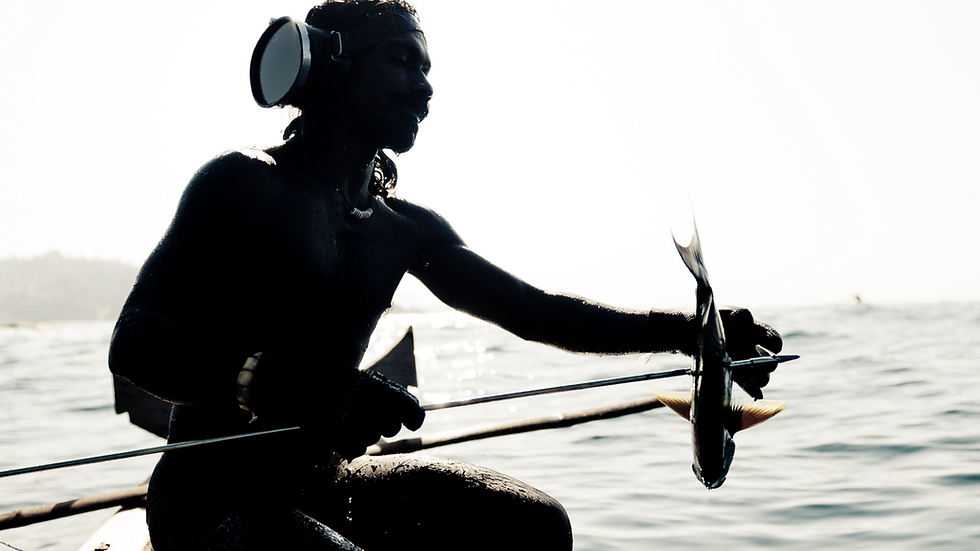Seafood and Health: The Hidden Health Hazards of Unsustainable Choices
- Tami Radovicova

- Dec 7, 2023
- 4 min read
Seafood, once recommended for its nutritional value, conceals an array of risks that extend beyond individual health. In this exploration, we delve into the factors that explain the not-so-healthy reality of seafood consumption, emphasizing the need for sustainable alternatives to protect our oceans and future generations.
Consumption of seafood is a complex topic and in this article, we will focus mainly on the seafood you can buy daily in supermarkets or that you can order in restaurants without digging deeper into the sustainability of its source. The ultimate question - to consume or not to consume - can be viewed from two main standpoints. The first one is about unsustainable fishing and the future of our oceans, and the second one is about the health benefits and risks of seafood consumption. In this article, we will focus on the second one.
Despite being traditionally viewed as a nutritional powerhouse, seafood carries risks that extend beyond its perceived health benefits and cannot be ignored. Especially from the point of view of environmental conservation, it becomes crucial to unveil the reasons why seafood may not be as good for us and our planet as once thought. As our oceans face the threat of overfishing and environmental degradation, it's essential to shed light on the factors that make seafood potentially harmful. The reevaluation of our dietary choices is one of the most important lifestyle choices that each of us can make on a personal level, in the interest of both personal well-being and the sustainability of our oceans.
Let's dig deeper into the 4 factors that can make seafood potentially harmful for your health:
1. Contaminants and pollutants
Seafood can be exposed to environmental pollutants such as polychlorinated biphenyls (PCBs), dioxins, and pesticides. These contaminants, often originating from industrial and agricultural activities, can accumulate in the fatty tissues of fish and may pose health risks if consumed in large quantities over time. Numerous studies have shown the presence of these contaminants in commonly consumed fish. A study published in the "Journal of Exposure Science & Environmental Epidemiology" found elevated levels of PCBs and organochlorine pesticides in farmed salmon. Consuming seafood contaminated with these pollutants can expose individuals to health risks. PCBs, for instance, are known to have adverse effects on the immune, reproductive, and nervous systems. Dioxins, classified as persistent organic pollutants, have been linked to cancer, developmental issues, and immune system disruption.
2. Mercury content
Some types of fish, especially larger predatory fish like sharks, swordfish, king mackerel, and certain types of tuna, can contain high levels of mercury. Mercury is a neurotoxin that can be harmful, particularly to pregnant women, nursing mothers, and young children. It can affect the nervous system development in fetuses and young children.
3. Foodborne illnesses
Like any perishable food, seafood can be contaminated with harmful bacteria, viruses, or parasites that can cause foodborne illnesses. Proper handling, storage, and cooking of seafood are essential to reduce the risk of foodborne illnesses. But even with the best handling, the bacterial and viral contamination in seafood can be linked to improper farming practices. Aquaculture, or fish farming, is a complex industry, and when not managed carefully, it can contribute to the spread of pathogens that pose risks to both the aquatic environment and human consumers. Especially in salmon farming, concerns have been raised about the farming practices. High-density fish farming in net pens can create conditions conducive to the spread of diseases and parasites among farmed fish. There have been instances of sea lice infestations in salmon farms, which can negatively impact both farmed and wild salmon populations. And the spiral goes on - the overuse of antibiotics and chemicals that the farms are using to control the disease and parasites can contribute to antibiotic resistance and have negative effects on the surrounding marine ecosystem. Moreover, the concentration of fish waste and uneaten feed around fish farms can lead to nutrient enrichment and contribute to dangerous algal blooms.
4. Microplastics
Microplastics, which are tiny particles of plastic less than 5 millimetres in size, have become a growing concern in the marine environment and can also be found in seafood. Microplastics can come from various sources, including the breakdown of larger plastic debris, microbeads in personal care products, and industrial processes. Every day around 8 million pieces of plastic make their way into our oceans and can be ingested by various marine life where each animal has a place in the food chain and can end up on our plates.
Several studies already proved the presence of microplastics in commonly consumed seafood. Among many others, in 2017, a study was published by Ghent University focusing on the presence of microplastics and associated potentially toxic substances in seafood, focusing on fish and invertebrates commonly consumed by humans. The researchers examined various marine species, including cod, mackerel, and crustaceans, collected from seafood markets. The results revealed the widespread occurrence of microplastics in the digestive tracts of the examined species. Additionally, the study found that microplastics could act as carriers for persistent organic pollutants (POPs) and metals. The concern raised was that the ingestion of microplastics by marine organisms could lead to the transfer of these harmful substances to the tissues of the animals, with potential implications for human consumers.
How microplastics can end up in seafood?
Ingestion by marine life: Small marine organisms may mistake microplastics for food and ingest them. As these smaller organisms are consumed by larger ones, the microplastics can accumulate and move up the food chain.
Filter feeding: Some marine species, such as certain types of shellfish (e.g., mussels, oysters), are filter feeders. They filter particles from the water to obtain nutrients, and they may also ingest microplastics in the process.
Contamination of aquatic habitats: Aquatic habitats, including oceans and rivers, can become contaminated with microplastics. As a result, fish and other seafood may come into contact with these particles, leading to ingestion.
Even with all of the presented challenges, there still exists a way toward sustainable seafood. In fact, making responsible seafood choices and asking questions about the source of the seafood is a great way how each of us can help our oceans. If the seafood is consumed sustainably, it’s not necessary to avoid it. If you decide to consume seafood, here are some tips on what you should focus on. Let our choices reflect a commitment to the well-being of both ourselves and the oceans that sustain us, ensuring a healthier future for generations to come. Individual choices make a difference.















Comments